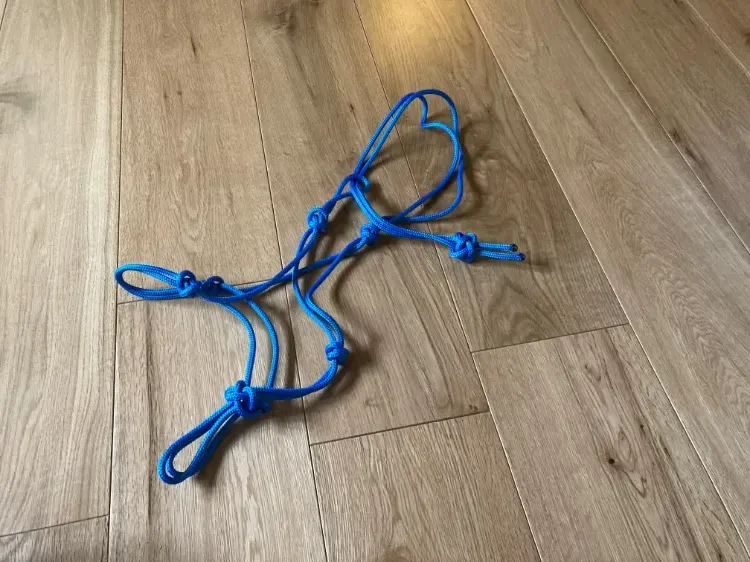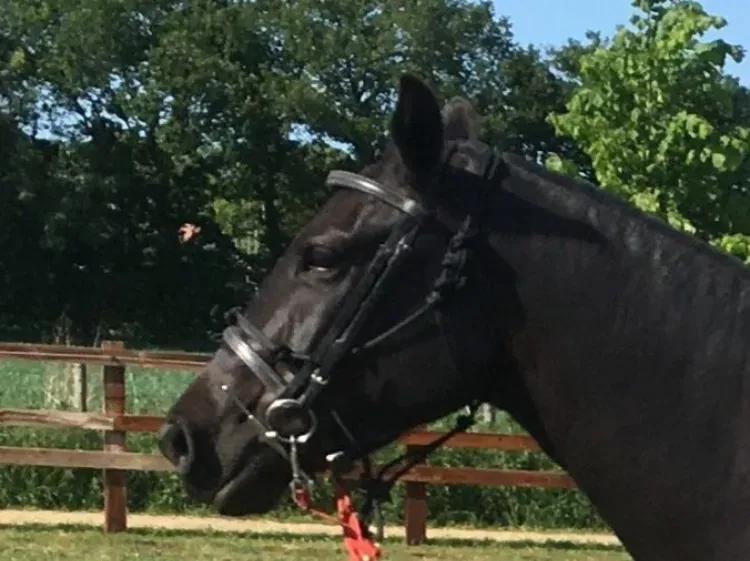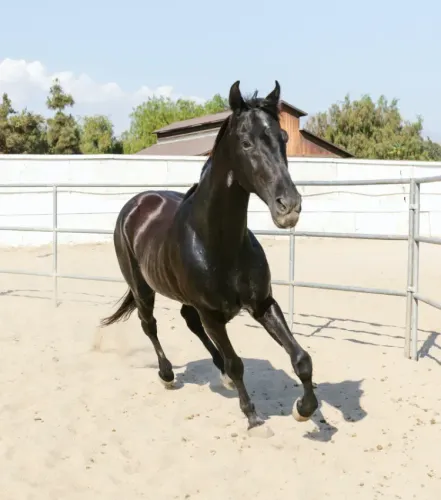
Does your horse have any behavioural problems when being led? The common difficulties are listed below:
- Bucking,
- Strong and impetuous,
- Head down to eat grass,
- Attempting to get away or napping to other horses.
Don’t worry if you are experiencing any of these problems. Just use these two practical training aids for a solution.
Training aid 1 – A rope halter made to the following specifications and correctly fitted
- Made of 550 paracord or double braided yachting cord.
- The cord needs to be 6mm thick.
- A knot in the centre of the halter noseband.
- A plain two-strand noseband without weaving or platting.
- Fitted so that the nose band is above the horse's soft nose cartilage.
This makes the halter more effective
In the event your horse plays up give one or two sharp pulls with your lead rope. The horse will feel this in the poll region and the nose region. Remember that horses react best to the release of pressure, so do not take a continuous tight hold unless you want a fight you cannot win.

3-year-old Fergie about to be lunged. The rope halter is used on its own for general leading. Notice the knot in the middle of the noseband section as well as its position on Fergie’s nose.
Training aid 2 – A lead rope with the following specifications
- A 12 or15 foot lead rope.
- knot at the end so it does not slip through your fingers.
Using the aids
- Walk the horse with the rope attached to the halter and the spare coiled in your hand furthest from the horse.
- The lead rope must be held loosely in the other hand, even if you are expecting trouble.
- When your horse rears, move away and play the rope out a little. Give him a couple of jerks as mentioned in the previous section.
- If he tries to run off, turn him in a few circles before leading again and repeat this if needed.
- With an impulsive horse a few jerks on the lead rope should steady him.
- The head in the grass horse needs a few jerks on the lead rope to raise his head.
Remember 2 things above all else
- Your horse is showing dominance and you must show that you are the lead horse by getting him to move his feet at your instigation. This happens in the field when a dominant horse moves a subordinate horse away.
- Horses are grazing animals and not hunters. As such they always react favourably to the release of pressure. Continuous pulling will always be ineffective. Horses will fight against continuous pressure because it mimics a prey animal that has hold of them.

Article Suggestion
The Power of Negative Reinforcement: How Horses Learn from the Release of Pressure
